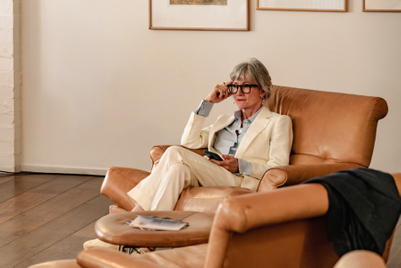
Growing awareness of the fact that half the display ads today are never viewed by human eyes has thrown the industry into intense debate. But despite new IAB guidelines, the discussion simmers on as to what precisely constitutes ‘viewability’ and the extent of the problem in Asia.
Much time has been spent on pinning down a dictionary definition of viewability. The IAB states that having “a minimum of 50 per cent of the ad in view for at least one second” counts as viewable.
In Southeast Asia the IAB recently adopted Media Rating Council guidelines established in the US, which define viewability in video advertising: at least half of an ad must be in-view on an active window for at least two seconds.
But buzzwords such as ‘in-view’, ‘viewable’ and ‘viewability’ leave many marketers scratching their heads, and the industry is no closer to agreeing on one benchmark for Asia-Pacific.
According to Phu Truong, TubeMogul managing director, Southeast Asia, definition is a mere distraction.
“The standard is not a mandate against marketers having stronger definitions, it just creates a common basis for measurement,” says Truong, referring to TubeMogul’s open-source platform tool. “The technology exists today for brands to define and apply their own rules.”
TripAdvisor took matters into its own hands and made a trade-off between impressions and ad interaction rates in 2012 when it implemented ‘Delayed ad call’. It means that advertisers are charged for an impression only when users scroll to the area of a page where the ad is shown.
“The move lowered our inventory by approximately 15 per cent but improved the CTR by 70 per cent and viewability by 35 per cent,” says Cindy Tan, display advertising VP, APAC, at TripAdvisor.
There is a risk publishers may adhere to standards for short-term gains without considering the long-term impact on their business and users. For example, if a 100 per cent ad in-view standard were adopted then most ads above the fold would meet the requirement or there could be a rise in overlays and interruptive ad formats.
To avoid interpreting standards too narrowly, Grace Liau, general manager Vivaki Asia-Pacific suggests publishers focus on user-engagement with the brand and content instead.
“New measurements should impact publishers in a way where there will be greater emphasis on how engaged the users of their websites are with ads,” Liau says. Experimentation with consumption and payment models could spark new ways of operating.
“We may likely see publishers start designing how users consume ads on their site,” she adds. “A question publishers might start asking themselves is, if users continue to skip through ads, should they be allowed to consume content for free?”
As more advertisers include viewability standards in their requirements, a sore spot is emerging for programmatic publishers who have a larger impression pool that are not viewable. Publishers may need to think more about design and engagement.
Pointing to a Google and Nielsen report, Gareth Mulryan, head of digital at ZenithOptimedia Asia-Pacific, says the drop-off from viewable impressions is more dependent on the page layout, a factor that the publisher can control. This presents an opportunity to enhance the way users absorb content.
“Publishers may end up adding more native advertising to the site and allow advertisers to push the same type of messaging that is less about brand and more about contextual engagement with the user,” says Mulryan, adding this should lead to ads being priced by cost-per-click.
“That is where most people would love to go and it would be 99.99 per cent viewable.”
Mistrust towards display media is driving the need for reform, Tan says. “Clients question the value of every impression purchased as well as the tracking tools and attribution models applied to measure campaigns.”
The question then is who will drive viewability forward in Asia? Not surprisingly, Truong believes the onus is on publishers and advertisers.
“For publishers that means making advertising a seamless part of the viewing experience; for advertisers, it means serving more relevant and engaging advertising that viewers actually want to watch,” he says. Programmatic buying, he adds, can help advertisers achieve that vision through better targeting and more control over who sees which ad and where.
Google on-boarding the IAB standards underscores the importance of this guide.
Applying and turning it into best practice will, however, require innovation and a new way of looking at how ads are served and measured.
Our view: Publishers need to act quickly as new standards will start to impact revenue.
Got something to add? Please write to [email protected]


.jpg&h=334&w=500&q=100&v=20250320&c=1)


.png&h=334&w=500&q=100&v=20250320&c=1)


.jpg&h=334&w=500&q=100&v=20250320&c=1)
.jpg&h=334&w=500&q=100&v=20250320&c=1)








.jpg&h=268&w=401&q=100&v=20250320&c=1)
